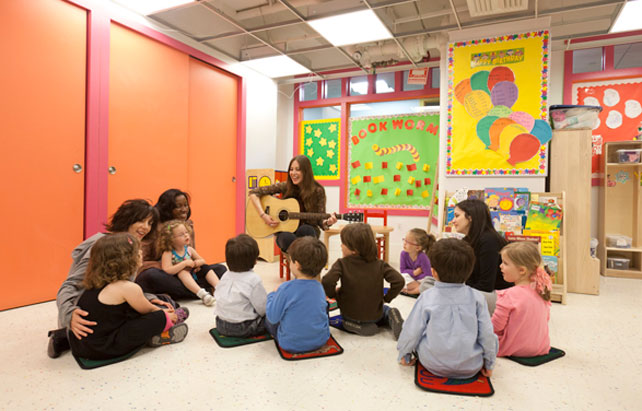Defining Circle Time

SHARED by: Vicky McLaughlin, M.Ed.
Director of Early Learning Foundations Preschool
Meeting Time. Gathering Time. Rug Time. Circle Time. These are all common terms for the same thing: a time when preschoolers can look forward to spending some time with their class, as a group, each day. Developmentally appropriate circle times promote socialization, help define the ethos of a class, and afford each child the opportunity to find his/her voice in a group setting.
Socialization
When children are asked to gather as a group, it pushes them to socialize with each other in a way that they may not during free play. Sitting next to a new friend, asking another child for help, and waiting for a turn are social skills that children need to function as members of a social group.
Classroom Ethos
Co-creating and following rules, being respectful of one another and recognizing the teacher as the group leader reinforces the culture, or ethos, of the school environment. These lessons are invaluable, as children will use them to help guide their behavior as they transition to other settings.
Voice
Skilled teachers plan gathering times to be very interactive, conversational, and dynamic in nature. When children exchange ideas, ask questions and tell their stories to the audience of their classmates, they learn that their words matter and are meaningful to the group as a whole.
Best practice dictates that a circle time last for approximately one minute per median age of the children in class. This means that two-year-olds should be able to attend and participate in a gathering time about two minutes long, multiple times throughout the class. As children develop longer attention spans and better memory banks, teachers gradually increase the amount of time that the circle lasts by adding content which is salient to what the class is experiencing. It is common for children ages three and older to contribute to circle time by sharing stories, answering questions, requesting songs and chanting together as they count down the days of the week or month.
Teacher-led activities reinforce sequencing, memory and vocabulary skills, while emergent conversations and spontaneous comments driven by children confirm that classrooms are indeed “communities of learners.”









